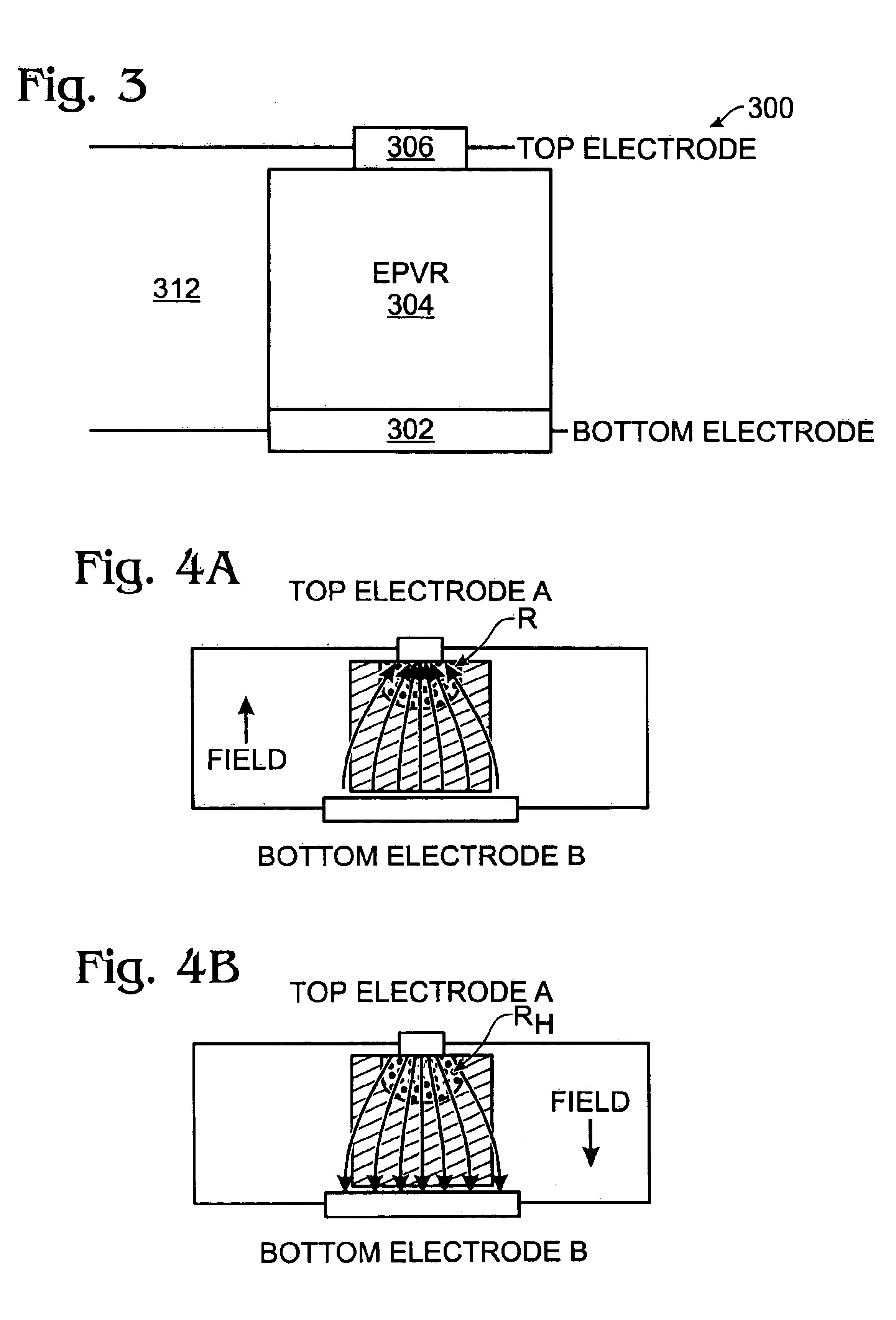Asymmetric memory cell
a memory cell and asymmetric technology, applied in the field of integrated circuit memory cell arrays, can solve the problems of change in cmr resistance, device more susceptible to process tolerance errors, and application not suitable for dense memory array applications
- Summary
- Abstract
- Description
- Claims
- Application Information
AI Technical Summary
Benefits of technology
Problems solved by technology
Method used
Image
Examples
Embodiment Construction
[0018]FIGS. 1A and 1B are partial cross-sectional views of a memory cell during programming (FIG. 1A) and erasing (FIG. 1B) operations. The top and bottom electrodes are identical and the memory resistance material is uniform throughout. If the geometric structure of the device could be made perfectly symmetrical, the net resistance would remains constant, in a high-resistance state, when either a negative field (FIG. 1A) or a positive field (FIG. 1B) is applied. Note that a field direction is defined with respect to the top electrode. That is, the field is considered to be induced from the top electrode. In such circumstances, programming is not possible. Therefore, a geometrically symmetric device structure, such as one in FIGS. 1A and 1B, is not practical.
[0019]More specifically, the geometrically symmetric memory cell has a high current density near the electrodes (regions A and B), and a low current density in the center portion of the device, in the presence of an electric fie...
PUM
 Login to View More
Login to View More Abstract
Description
Claims
Application Information
 Login to View More
Login to View More - R&D
- Intellectual Property
- Life Sciences
- Materials
- Tech Scout
- Unparalleled Data Quality
- Higher Quality Content
- 60% Fewer Hallucinations
Browse by: Latest US Patents, China's latest patents, Technical Efficacy Thesaurus, Application Domain, Technology Topic, Popular Technical Reports.
© 2025 PatSnap. All rights reserved.Legal|Privacy policy|Modern Slavery Act Transparency Statement|Sitemap|About US| Contact US: help@patsnap.com



